#everson museum of art
Explore tagged Tumblr posts
Text

... spiral ...
This self-supporting spiral staircase made of concrete is a focal point at the Everson Museum of Art in Syracuse, New York. Chinese-American architect I.M. Pei designed the Modernist structure in the late 1960s and the building is described as a work of art in itself. (Photo: Pei, Cobb Freed, circa 1969)
31 notes
·
View notes
Text

NEW close-up of John Lennon at Yoko Ono's art exhibition, This Is Not Here, in Everson Museum at Syracuse University, October, 1971.
31 notes
·
View notes
Text

This self-supporting spiral staircase made of concrete is a focal point at the Everson Museum of Art in Syracuse, New York. Chinese-American architect I.M. Pei designed the Modernist structure in the late 1960s and the building is described as a work of art in itself. (Photo: Pei, Cobb Freed, circa 1969)
20 notes
·
View notes
Text

May Fung Yee Pang (龐鳳儀, 庞凤仪) (born October 24, 1950) is an American former music executive. She worked for John Lennon and Yoko Ono as a personal assistant and production coordinator. When Lennon and Ono separated in 1973, Pang and Lennon began a relationship that lasted more than 18 months. Lennon later referred to this time as his “Lost Weekend”.

Early Years and Education
Pang was born in Manhattan. She is the daughter of Chinese immigrants and grew up in the Spanish Harlem section of New York City with an elder sister and an adopted brother, both of whom were born in China. Pang’s mother owned and operated a laundry business in the area. The Pang family left Spanish Harlem when the tenements where they lived were scheduled to be razed, moving to an apartment near 97th Street and 3rd Avenue in Manhattan.
After graduating from Saint Michael Academy, Pang attended New York City Community College. She aspired to be a model, but modelling agencies reportedly told her she was too “ethnic”.
Pang’s early jobs included being a song-plugger, which meant encouraging artists to record songs written by songwriters. In 1970, she began work in New York as a receptionist at ABKCO Records, Allen Klein’s management office, which at that time represented Apple Records and three former Beatles: Lennon, George Harrison, and Ringo Starr.
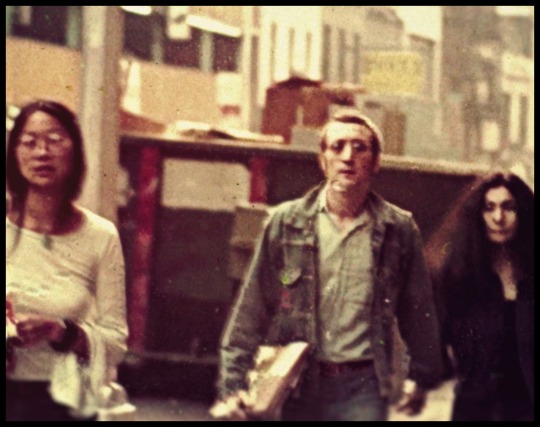
Relationship with John Lennon and Yoko Ono
Pang was asked to help Lennon and Ono with their avant-garde film projects, Up Your Legs Forever and Fly, in December 1970.
Pang was then asked to be Lennon and Ono’s secretary and factotum (domestic worker) and gofer (employee who specializes in the delivery of special items to their superior(s)) in New York City and Britain, which led to a permanent position as their personal assistant when the Lennons moved from London to Manhattan in 1971.
Pang coordinated an art exhibition in Syracuse, New York, on October 9, 1971, for Ono’s This Is Not Here art show at the Everson Museum. Ono’s show coincided with Lennon’s 31st birthday, and a party was held at the Hotel Syracuse, which was attended by Ringo Starr, Phil Spector, and Elliot Mintz.

“Lost Weekend”
In mid-1973, Pang was working on the recording of Lennon’s Mind Games album. Lennon and Ono were having marital problems, and Ono suggested to Pang that she become Lennon’s companion. Ono explained that she and Lennon were not getting along, they had been arguing and were growing apart, and that Lennon would start seeing other women. She pointed out that Lennon had said he found Pang sexually attractive. Pang replied that she could never start a relationship with Lennon as he was her employer and married. Ono ignored Pang’s protests and said that she would arrange everything. Ono later confirmed this conversation in an interview.
In October 1973, Lennon and Pang left New York for Los Angeles to promote Mind Games, and decided to stay for a while, living at lawyer Harold Seider’s apartment for a couple of days and then Lou Adler’s house. While there, Lennon was inspired to embark on two recording projects: to make an album of the old rock ‘n’ roll songs that inspired him to become a musician, and to produce another artist. In December 1973, Lennon collaborated with Phil Spector to record the oldies album Rock ‘n’ Roll. Lennon’s drinking and Spector’s erratic behavior (which included his firing a gun in the studio control room) caused the sessions to break down. Then Spector, who claimed to have been in a car accident, took the session tapes and became unreachable.
In March 1974, Lennon began producing Harry Nilsson’s Pussy Cats album, thus named to counter the “bad boy” image the pair had earned in the media with two drinking incidents at the Troubadour. The first was when Lennon placed a Kotex on his forehead and scuffled with a waitress at a concert given by Ann Peebles, who had released “I Can’t Stand the Rain”, one of Lennon’s current favorite records; and the second, two weeks later when Lennon and Nilsson were ejected from the same club after heckling the Smothers Brothers. Lennon thought it would be a good idea for the musicians to live under one roof to ensure they would get to the studio on time, so Pang rented a beach house in Santa Monica for her, Lennon, Nilsson, Ringo Starr and Keith Moon to live. At this time, Pang encouraged Lennon to reach out to family and friends. He and Paul McCartney mended fences and played together for the first and only time after the breakup of the Beatles. Pang also arranged for Julian Lennon to visit his father for the first time in almost four years.
Julian began to see his father more regularly. Lennon bought Julian a Gibson Les Paul copy guitar and a drum machine for Christmas in 1973, and encouraged Julian’s interest in music by showing him some chords. “Dad and I got on a great deal better then,” recalls Julian. “We had a lot of fun, laughed a lot and had a great time in general when he was with May Pang. My memories of that time with Dad and May are very clear—they were the happiest time I can remember with them” The cover of Julian’s seventh album, Jude, features a childhood photo of him taken by Pang.
In June 1974, Lennon and Pang returned to live in Manhattan. Lennon stopped drinking and concentrated on recording. Lennon previously had cats while he lived at his Aunt Mimi’s house in Liverpool; he and Pang adopted two cats that they named Major and Minor.
In the early summer, Lennon was working on his Walls and Bridges album when the couple moved into a penthouse apartment at 434 East 52nd Street. On August 23, Lennon and Pang claimed to have seen a UFO from their terrace, which had a panoramic view of Queens. To gain access to the deck, Lennon and Pang had to climb out of their kitchen window. On the night in question, a naked Lennon excitedly called Pang to join him on the deck outside and they both watched a circular object silently floating less than 100 feet away. Lennon called Bob Gruen—Lennon’s “official” photographer—and told him what had happened. Gruen suggested Lennon should call the police, but Lennon laughed it off, saying, “I’m not going to call up the newspaper and say ‘This is John Lennon and I saw a flying saucer last night.’” Gruen called the local police precinct which confirmed that three other people had reported a sighting, and the Daily News wrote that five people had reported a sighting in the same area of New York where Lennon and Pang lived. Lennon references the incident in the song “Nobody Told Me”.
Walls and Bridges rose to the top spot on the album charts. Lennon achieved his only number-one solo US single in his lifetime with “Whatever Gets You thru the Night”. Pang’s is the voice whispering Lennon’s name on “#9 Dream”. “Surprise, Surprise (Sweet Bird of Paradox)” was written about her. Julian played drums on the album’s last track, “Ya Ya”. While recording Walls and Bridges, Al Coury, vice president of promotion for Capitol Records, got possession of the chaotic Spector session tapes and brought them to New York. Lennon completed his oldies album, which was titled Rock 'n’ Roll, with the same musicians he used on Walls and Bridges. Pang received an RIAA gold record award for her work on Walls and Bridges and continued her work as production coordinator of Lennon’s Rock 'n’ Roll album, where she was credited as “Mother Superior”. Pang also worked on albums by Nilsson, Starr, Elton John and David Bowie.
While visiting Mick Jagger at Andy Warhol’s compound in Montauk, New York, Lennon and Pang saw a Scottish-style cottage for sale close to the Montauk Point Lighthouse. Lennon asked a real estate broker to put in an offer for it in February 1975.
In the same month, Lennon and Pang were also planning on visiting Paul and Linda McCartney in New Orleans, where their band Wings were recording the Venus and Mars album, but Lennon reconciled with Ono the day before the planned visit, after Ono said she had a new cure for Lennon’s smoking habit. After the meeting, he failed to return home or call Pang. When Pang telephoned the next day, Ono told her that Lennon was unavailable because he was exhausted after a hypnotherapy session. Two days later, Lennon reappeared at a joint dental appointment; he was stupefied and confused to such an extent that Pang believed he had been brainwashed. Lennon told Pang he had reconciled with Ono and their relationship was over. Over the coming years, Pang quietly met Lennon a few times but their relationship was never rekindled.
Lennon lamented this period publicly but not in private. Journalist Larry Kane, who befriended Lennon in 1964, wrote a comprehensive biography of Lennon which detailed the “Lost Weekend” period. In the interview with Kane, Lennon explained his feelings about his time with Pang; “You know Larry, I may have been the happiest I’ve ever been… I loved this woman (Pang), I made some beautiful music and I got so fucked up with booze and shit and whatever.”
At the time Lennon had his 18-month relationship with Pang, he was in a period of his life that he later referred to as his “Lost Weekend”, in reference to Charles R. Jackson’s 1944 novel with the same title.
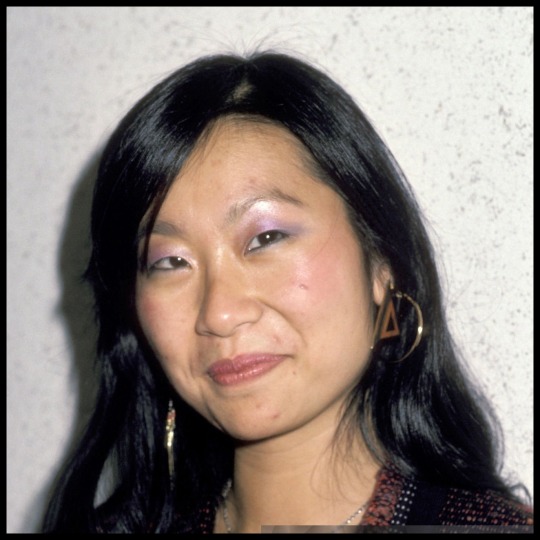
The 1980s and Beyond
After Lennon returned to Ono, Pang started working for United Artists Records and Island Records as a public relations manager, working on albums by Bob Marley and Robert Palmer.
Pang published her memoir Loving John in 1983. The original 500-page book focused mainly on Pang’s role on Lennon’s albums and sessions. It was updated and renamed John Lennon: The Lost Weekend and was edited down to 300 pages, concentrating mostly on the sensational aspects of their relationship. It also included postcards that Lennon had written to Pang during his travels throughout the world in the late 1970s. Pang claims that she and Lennon remained lovers until 1977, and stayed in contact until his death.
Pang married record producer Tony Visconti in 1989; the couple divorced in 2000. They had two children, Sebastian and Lara.
Pang remains in touch with some of the people from her time with Lennon, and Paul McCartney invited her to Linda McCartney’s memorial service after she died in 1998. She was an invited guest at The Concert for George in 2002 and remained close to Cynthia Lennon and Lennon’s first son, Julian.
Although having had no contact for 30 years, on October 9, 2006, Pang accidentally met Ono in Iceland, on what would have been Lennon’s 66th birthday. Ono was in Iceland to unveil a sculpture in Reykjavík and was staying in the same hotel.
Pang’s book of photographs Instamatic Karma was published in 2008. Besides the candid personal portraits, the book contains some historically important photographs, such as Lennon signing the official dissolution of the Beatles’ partnership, and one of the last known photographs of Lennon and Paul McCartney together. John’s first wife Cynthia Lennon also provided a back cover endorsement, acknowledging Pang’s role in reuniting Lennon with his estranged first son, Julian.
Around 2010, Pang started her own jewelry business. She designs stainless-steel feng shui jewelry.
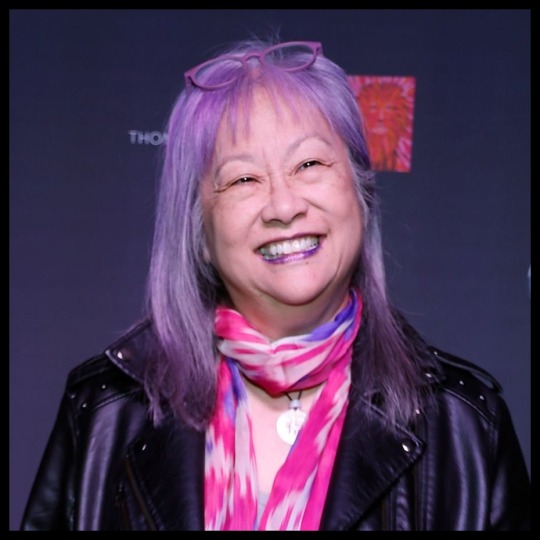
Recent Years
Around 2020, Pang started her own jewelry business. She designs stainless-steel feng shui jewelry.
The Tribeca Film Festival announced the 2022 premiere of The Lost Weekend: A Love Story, a 97-minute documentary about Pang’s life and relationship with Lennon, on June 10 via virtual home viewing. The film was produced and directed by Eve Brandstein, Richard Kaufman and Stuart Samuels. The Lost Weekend appeared in theaters internationally for a limited run April 13th and 14th 2023 and became available via streaming and on BluRay in October 2023.
Coinciding with the release of the 2022 documentary, Pang published a collection of her photographs of Lennon which were made available for sale in an touring exhibition called The Lost Weekend: The Photography of May Pang.
Pang still resides in New York City. She volunteers with an animal shelter called Animal Haven in New York and owned a dog that was rescued after Hurricane Katrina. She also co-hosts an Internet talk radio show, Dinner Specials with Cynthia and May Pang, at blogtalkradio.com, with on-air partner Cynthia Neilson.
*CHECK OUR MAY PANG PHOTO ALBUM HOSTED AT GOOGLE PHOTOS*
#May Pang#bio#muse#model#1970s#1980s#author#artist#photographer#producer#jewelry designer#backing vocalist#personal assistant#secretary#google photos#sharing is caring#link#join
7 notes
·
View notes
Text

the Everson Museum of Art in Syracuse NY
6 notes
·
View notes
Text
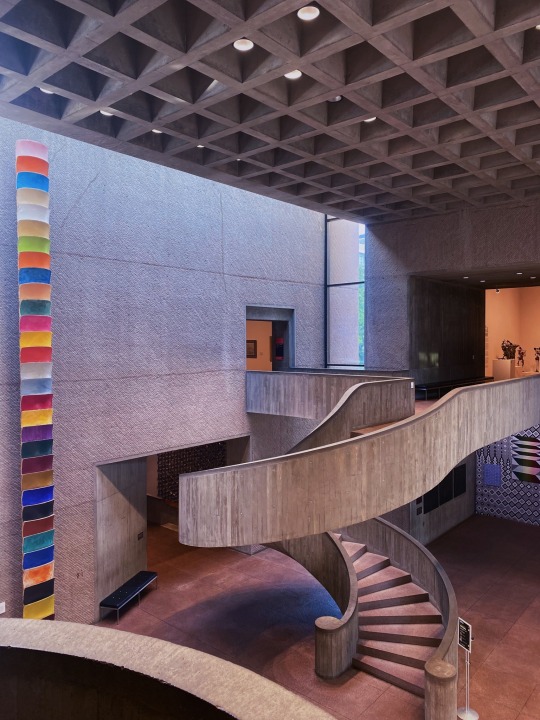



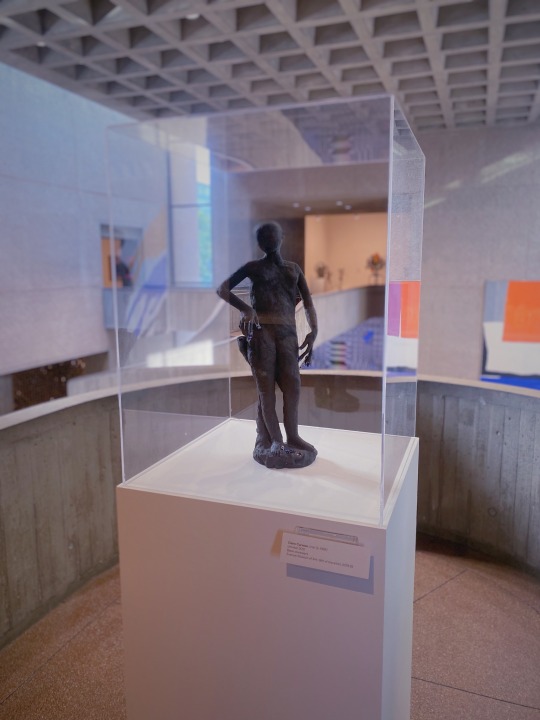
Mr. I.M. Pei’s
EVERSON MUSEUM of ART
Syracuse, NY
#new york#central new york#syracuse#art#college#photography#film#syracuse ny#artists on tumblr#museum#art museum#artwork#scultpure#acrylic paint#classical painting#architecture#brutalism#brutalist architecture#I. M. Pei#chinese#chinese american#architect
122 notes
·
View notes
Text

The Everson Museum of Art has the distinction of being the first museum commission for world renowned architect I.M. Pei.
#impei#architecture#brutalist#brutalism#brutalist architecture#concrete#cement#I.M Pei#art museum#museum
52 notes
·
View notes
Text

76 notes
·
View notes
Text

Bradley Walker Tomlin, Tension by Moonlight, 1948 Oil on canvas, 32 x 44 in. Collection: Everson Museum of Art, Syracuse, NY
"During most of his career, Tomlin painted lyrical Cubist still lifes while teaching at Sarah Lawrence and assorted boys’ schools. In the mid-1940s, he was influenced by the Abstract Expressionist painter Adolph Gottlieb. Experimenting with the semiautomatic methods used by Gottlieb and many Abstract Expressionists, he created graceful works, such as Tension by Moonlight (1948), that reflect his interest in Japanese calligraphy. He soon regarded such aesthetic freedom with suspicion, however, and began to paint more premeditated pieces, such as Number 9: In Praise of Gertrude Stein (1950), in which calligraphic and typographic shapes form a floating, but controlled, network over the entire surface of the canvas. During the remaining years of his life, he produced many paintings in subtle variations of this style, imbuing all his works with a distinctive melancholy." (via)
10 notes
·
View notes
Text


Y'all people are chopping up rare copies of Sturtevant's 1973 Everson Museum exhibition catalogue—which was designed to look like it a sheaf of Xeroxed pages—and forging the artist's signature on them, and selling them as individual prints.
Don't do this to books, and don't be suckered by auction houses that have somehow managed to corner the market on "signed" "original" "offset prints" for dozens of unrelated artists.
images, top: the cover of Sturtevant's 1973 catalogue for her show at the Everson Museum in Syracuse, concept by the artist, design and production by Judson Rosebush. 104 pages, offset printed on one side, 8.5 x 11 in. paper. image via Tim Byers Art Books. bottom: two pages from Sturtevant's catalogue, one of her and Rauschenberg posing as Adam and Eve, and the other of a quartet of four of her Warhol Marilyn paintings, cut out and fake-signed, and put up for sale as authentic prints.
#sturtevant#chop shop#fake#liveauctioneers is a cesspool#everson museum#the way xerox immediately became an aesthetic#judson rosebush
2 notes
·
View notes
Text
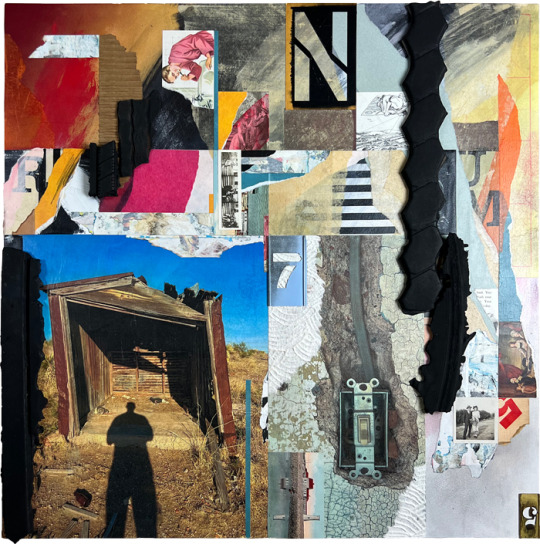
COLLAGE ON VIEW
No Roses in December
David Edward Johnson at the Everson Museum of Art in Syracuse, New York, USA through 31 March 2024. “No Roses in December” features a series of works in which David Edward Johnson explores his father’s diagnosis of and descent into dementia. Johnson pairs his own photographs of bleak West Texas vistas and abandoned adobe dwellings with abstract mixed media painting, vintage papers, found objects, and other ephemera as a way to evoke fragmented shards of memory that mimic his father’s state of mind. The series title references a poem by Geoffrey Anketell Studdert-Kennedy that was popularized in a speech about courage by Peter Pan author JM Barrie: “God gave us memory so that we might have roses in December.” Without memories, we have no blooms in the chill of the December of life. Read More
*****************************
Kolaj Magazine, a full color, print magazine, exists to show how the world of collage is rich, layered, and thick with complexity. By remixing history and culture, collage artists forge new thinking. To understand collage is to reshape one's thinking of art history and redefine the canon of visual culture that informs the present.
SUBSCRIBE | CURRENT ISSUE | GET A COPY
SIGN UP TO GET EMAILS
#collage#collage art#collage artist#art#artist#artistic#art history#art project#art show#art books#art education#contemporary art#artwork#modern art#fine art#artist residency#artist books#contemporary artist#artist portfolio#artist book#artist profile#artist collective#paper collage
5 notes
·
View notes
Text
NY / Ryan Patrick Krueger: Documents from the Closet

Courtesy of the Artist and Rivalry Projects, Buffalo, NY
Ryan Patrick Krueger: Documents from the Closet August 5 - September 10, 2023 Opening reception: August 5, 2023, 5-8pm
Tiger Strikes Asteroid New York is pleased to present Documents from the Closet, a solo installation of work by Ryan Patrick Krueger, curated by Samantha Box. This exhibition marks Krueger’s New York City debut, and is accompanied by a curatorial text written by Mary Lee Hodgens, artist and former Assistant Director of Light Work, Syracuse.
Documents from the Closet
Mary Lee Hodgens For their ongoing project, Documents from the Closet, artist Ryan Patrick Krueger works with a personal collection of LGBTQ+ archives, vernacular photographs, and ephemera to tell a story about grief, loss, and courage. The artist weaves together two narratives, an unflinching effort to understand personal losses and identity through an exploration that begins in the historical oppression of gay men.
In the gallery, Krueger props seven-foot-tall pine boxes precariously against the walls, balanced atop piles of dirt or sand. In size and shape, the boxes feel reminiscent of monuments, gravestones, or coffins. Each box contains a history lesson: formally elegant collages of monochromatic black-and-white shapes that Krueger punctuates with flourishes of pink, red, and the bright yellow of shipping envelopes. Collage is about finding new meaning in the juxtaposition of disparate elements. For Krueger, this process of isolating, truncating, or layering visual information allows for dialogue with the past while telling their own newer story.
In 2011, Krueger began an eBay search using phrases such as “gay interest” and “vintage gay photograph” to hunt down photographs depicting what they describe as “tenderness, friendship, intimacy, and true love.” These photographs, including tintypes and photo booth portraits, show us men—now long gone—embracing or sometimes just mugging for the camera. Played out decades ago, these fleeting moments of connection and intimacy now feel furtive. Krueger allows us to see their process by including eBay receipts and the handwritten envelopes in which a network of other collectors of “gay interest” move and share these documents. We grieve these lives with the artist, who asks us to consider both the complexities of living a double life in pre-Stonewall America and our own human need for connection and community.
Krueger references many iconic gay artists, activists, and organizations here, including Act Up, David Deitcher, Essex Hemphill, Hal Fischer, Jonathan Ned Katz, Marlon Riggs, the Mattachine Society, and David Wojnarowicz. The artists also layers many symbols of the struggle over the documents, including a red tie, pink triangles, a locket containing the ashes of a childhood best friend, red boxing gloves, and clippings of classified ads from the pages of a defunct 1990’s LGBTQ+ newspaper.
What emerges is that Krueger’s embrace of LGBTQ+ American history allows them to stand on a timeline that faces forward. Although each box feels final and heavy with grief, there is also a sense of triumph. In acknowledging those who’ve gone before, Krueger transforms the boxes into protest banners. Furtiveness falls away, and in its place comes acceptance and yes, pride. As artist and AIDs activist David Wojnarowicz said, “To make the private into something public is an action that has terrific ramifications.”
Ryan Patrick Krueger holds a BFA in Photography from Pacific Northwest College of Art in Portland, Oregon, and was formerly Digital Services Coordinator for Light Work, a non-profit artist-run photography organization at Syracuse University. Krueger has curated exhibitions and held shows nationally including Documents from the Closet at the Everson Museum of Art (Syracuse, NY), On Longing at MONACO (St. Louis, MO), Response Response (with Linda Kliewer in Portland, OR), and Queer Moments: Selections from the Light Work Collection (Syracuse, NY). Most recently, Krueger exhibited work in the 2022 FotoFest Biennial, If I Had A Hammer, (Houston, TX), and appeared in Aperture, Art in America, and Sixty Inches From Center.
6 notes
·
View notes
Photo



Similar kinds of porcelain sculptures I found at the Everson Museum of Art
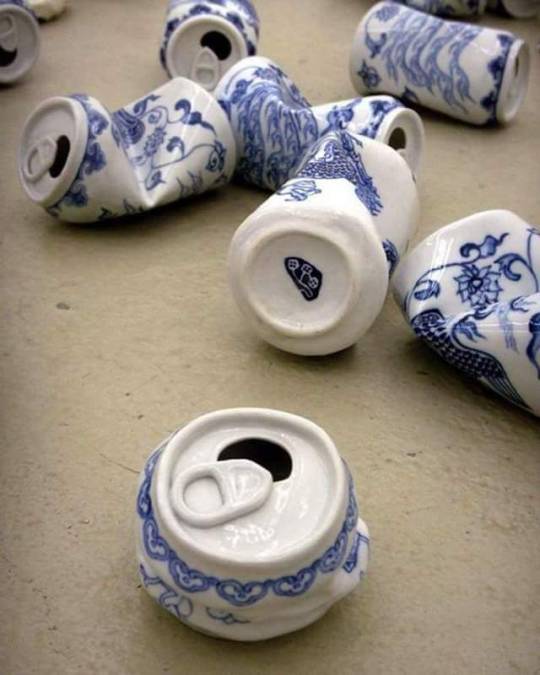
Smashed aluminum cans sculpted in porcelain to mimic Ming Dynasty motifs by artist Lei Xue.
58K notes
·
View notes


